Worms are fascinating creatures and your child is bound to stumble onto one at some point in their childhood. Chances are they’ve spotted one on the sidewalk after rain or found one while digging in the dirt. Worms are not just exciting to explore and easy to find, but they are also incredibly beneficial to our soil and plant health. Today Katie Fox, full-time RV traveling and hiking mom of two, is here to share all about exploring worms with kids.
{This post contains affiliate links.}
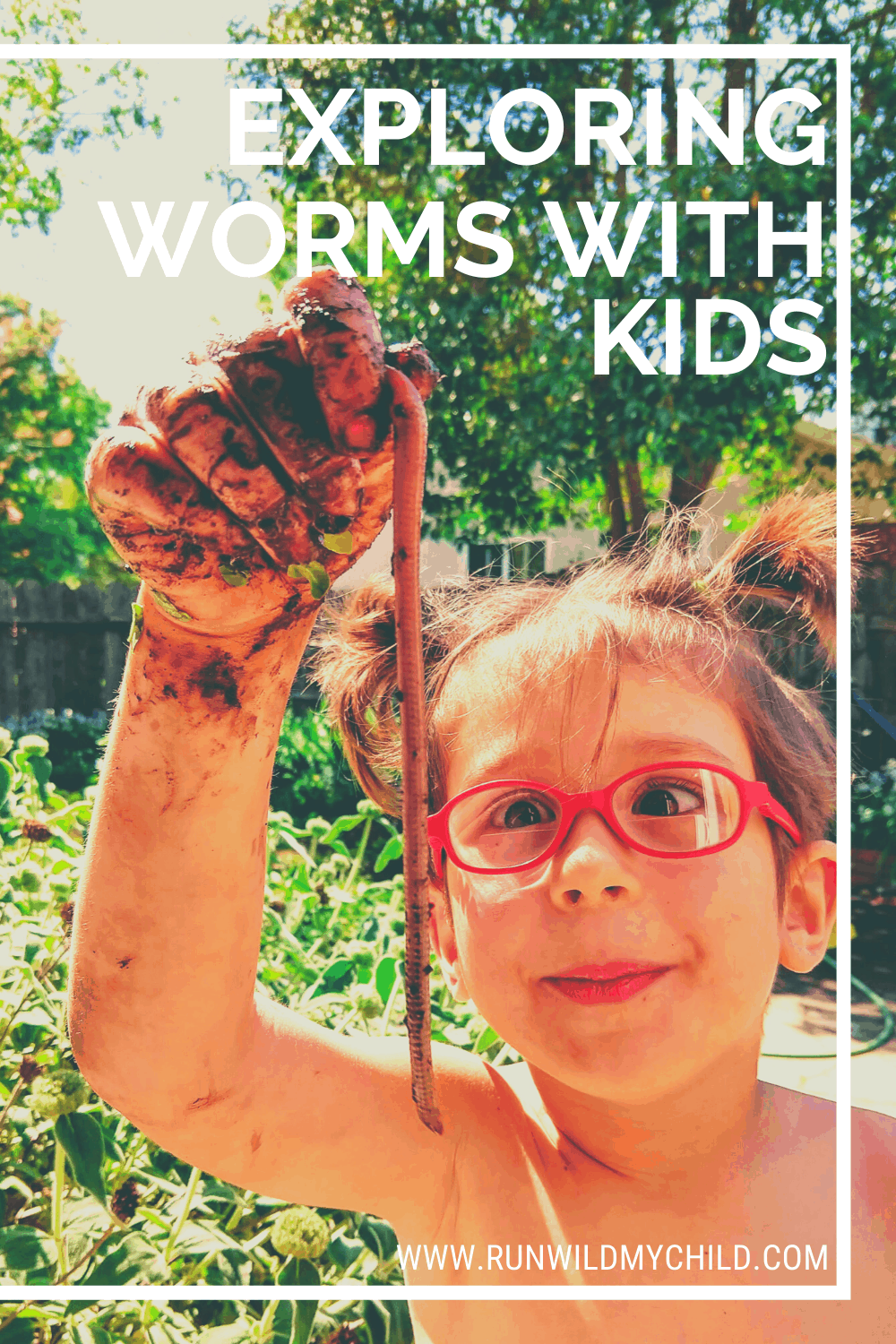
“I do not want to be a fly, I want to be a worm!” — Charlotte Perkins Gilman
Ways to explore worms with children
That magic moment when a child finds a worm for the first time is not something you soon forget. Maybe your child shrieked and ran away, leaving behind a fun story to tell them later in life. But, if your children are anything like mine, they will be excited and joyful at finding worms.
And if your child is the shrieker, have no fear. Exploring worms with kids isn’t all about digging for them and handling them. In fact, you can learn all about worms without ever touching one. So strap on your outdoor play shoes and let’s dive into easy ways to explore worms with your children.
Where to find worms
When you go on a worm hunt, one of the very first things you need to know is where to find these elusive creatures. This is not always an easy feat. But with a little determination and some ideas on where to look, you have a high chance of being successful. And remember, if at first, you don’t succeed, dig, dig again.
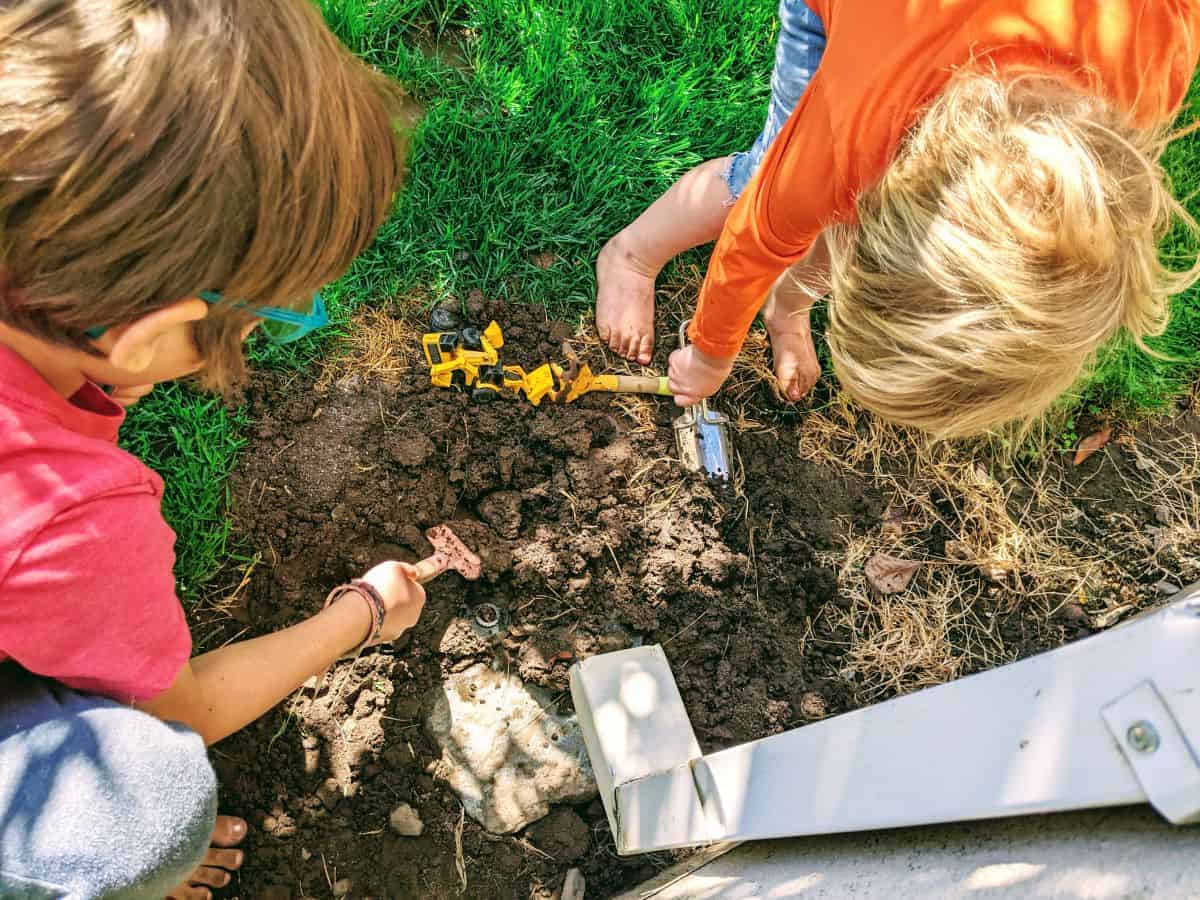
Dig in wet dirt
Wet dirt (not mud) is one of the best places to begin looking for worms with kids. Not only do children enjoy digging in the dirt, but they are more likely to find worms in wet dirt. We always like to start by digging under rain gutters or near water faucets. These areas are usually a bit wetter than the rest of the yard and make great starting points.
Other places to dig with a high chance of success are in a garden or near a green lawn. These areas are usually watered often and thus make great homes for worms.
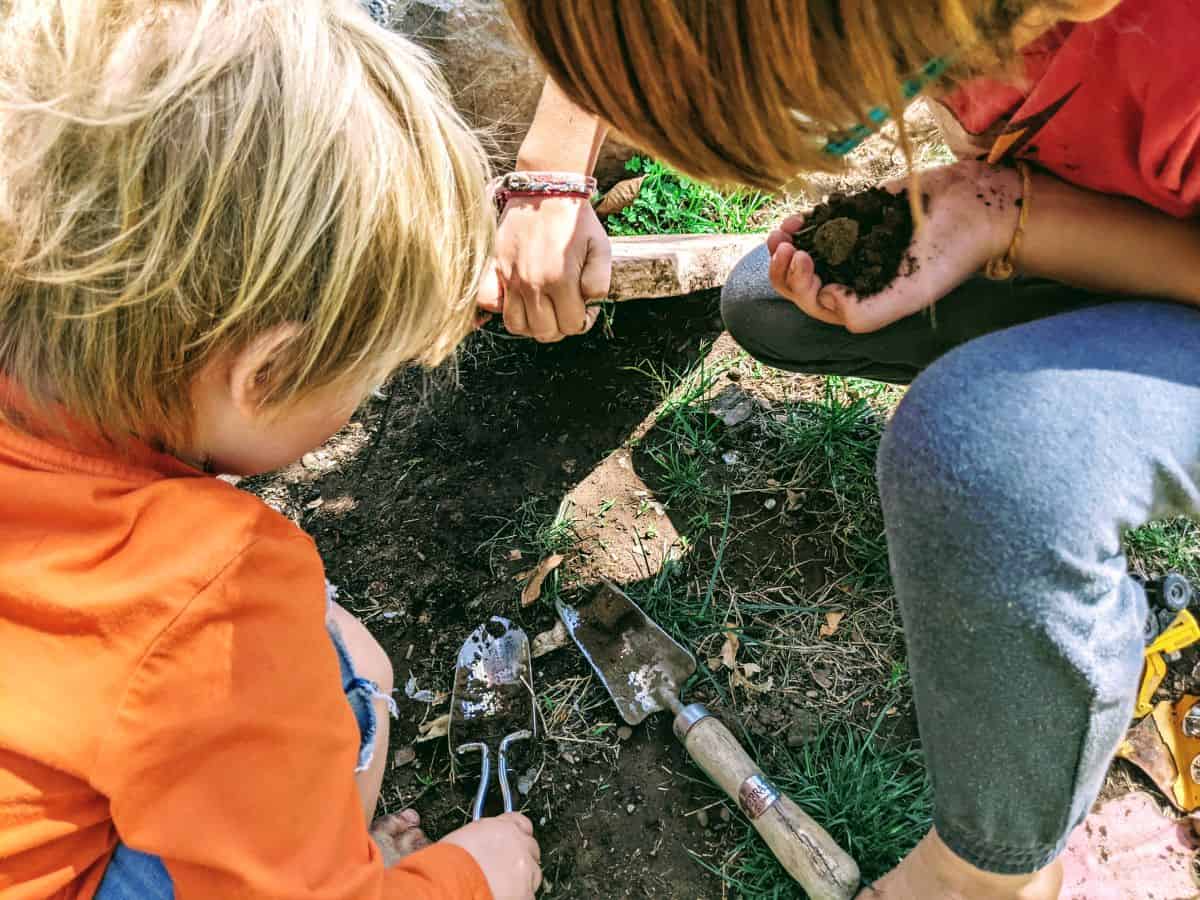
Look under large rocks/stepping stones
If you’ve ever turned over large rocks you know it is a hub for all dirt-loving critters. If you have access and permission, gently lifting large rocks or stepping stones is another great place to search for worms with kids. Not only are you likely to find worms, but there is a host of so many other tiny critters living in these spaces to explore, identify, and learn about.
Watch the sidewalks
If you’ve ever gone for a walk in the rain or immediately after a rainstorm, you’ve surely come across one or more worms resting on the cement. In fact, when it rains a lot, worms surface because the raindrop vibrations feel like predator vibrations. In other words, they are running away from a threat that does not exist. So if digging in the dirt and flipping over rocks aren’t options, just wait until the next rainstorm and head on outside for a walk. The worms are bound to make an appearance and give your children a chance to see and explore them.
Sometimes the rain will wash them into the street, driveways or sidewalks. We love “saving the worms” when they’re trapped on concrete and gently put them back in the grass to be found another day!
Buy them
Don’t have a good place to dig or keep coming up empty? You can buy bait worms pretty cheap at local bait and tackle shops. Take a small container home and place them in a larger bin or bowl for exploration. If you go this route, make sure to include some moist soil to keep the worms healthy.
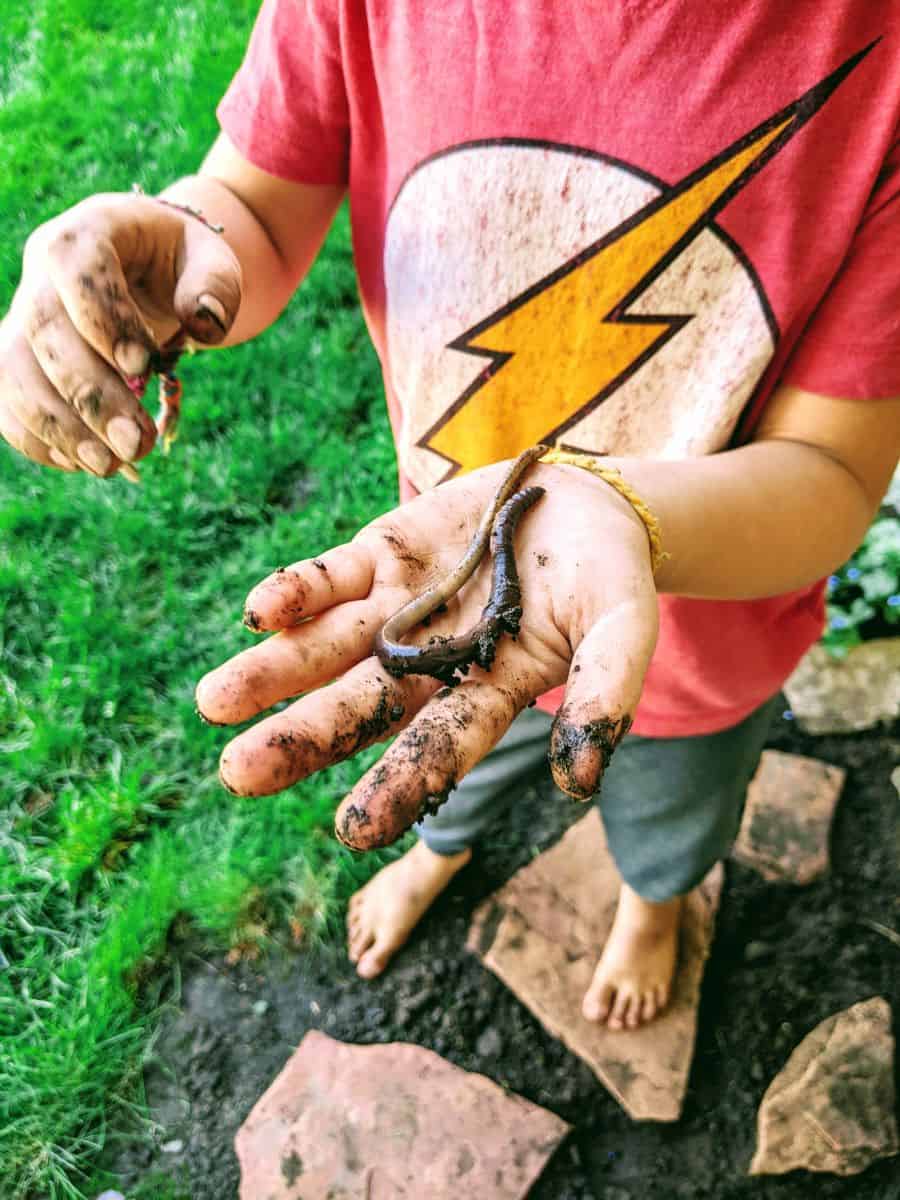
Worm exploring safety tips
Exploring worms with kids is such a fun and easy activity. Little to no prep is needed and it can easily happen spontaneously or with a little planning. As with any living creature, it is important to know how to explore worms safely. Here are some quick tips to make sure you handle your worms as safely as possible.
- 30 minutes or less: Make sure all worms you catch are released back into the wild after about 30 minutes of exploration. However, if you still have more activities to do or just want to watch the worms some more, try to find some new worms.
- Worms are very sensitive: Do not handle them too much and always use a gentle touch.
- Keep the exploring area damp: Use a damp cloth or paper towel to set your worms on if you remove them from their habitat.
- Keep them in the shade: Make sure to handle the worms in a shady space, out of direct sunlight.
- Mist the worms often: Keep a misting spray bottle on hand and gently spray your worms often to ensure their bodies are kept moist.
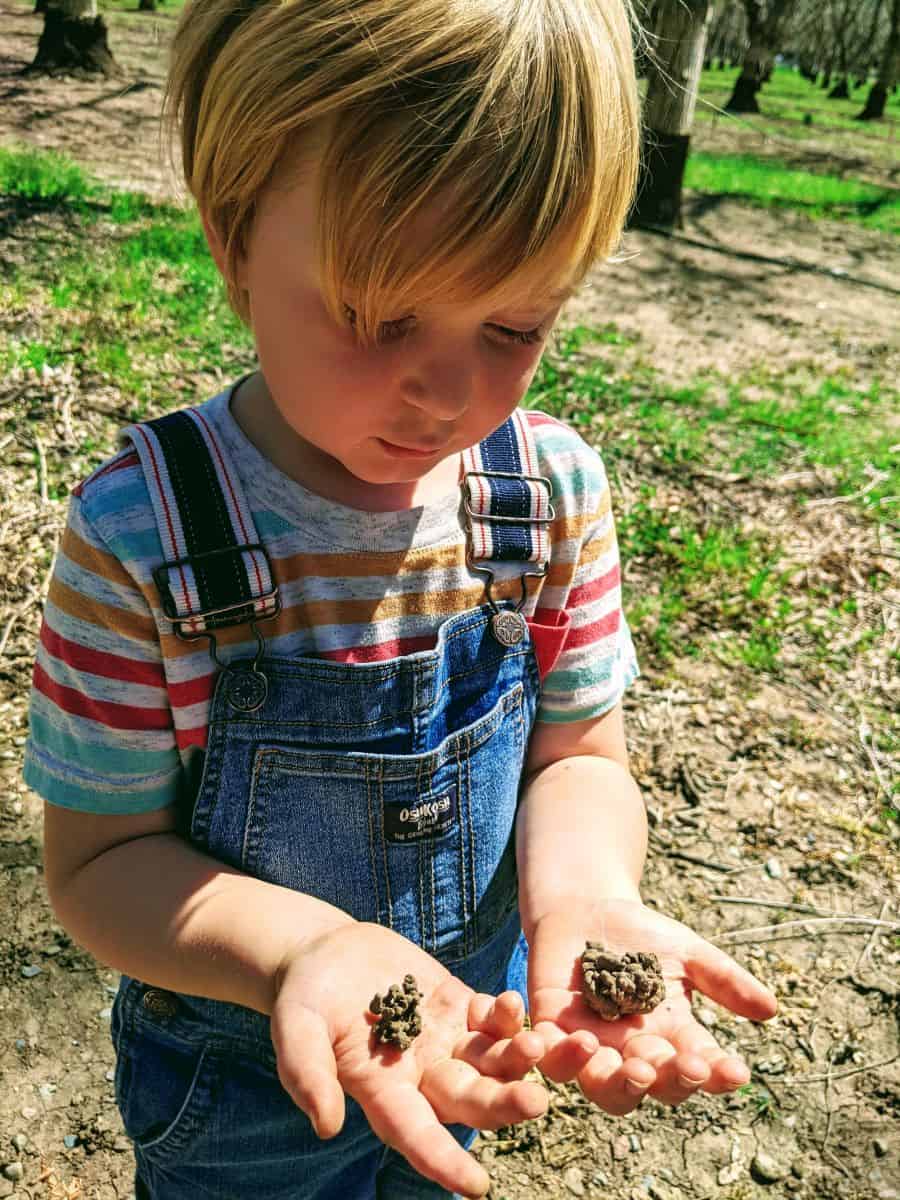
Worm facts for kids
When you’re exploring worms with kids, they’re sure to be curious and ask questions. I don’t know about you, but I’m not up to speed on all my worm facts these days! So, I’ve done some of the work for you and put together this list of fun facts about worms that are sure to please inquiring little minds. Whip these facts out and your kids are sure to be wowed with your extensive knowledge! (you can thank us later)
- There are thought to be 4,400 (or more) species of earthworm.
- Earthworms have no resistance to the sun’s ultra-violet radiation, so daylight can be fatal to them.
- Worm castings (also known as vermicast) improve soil health.
- An earthworm can lose one end of its body and grow a replacement, but the worm will die if it is cut in half.
- Earthworms are attracted to one another by scent.
- There are fossilized worms in 600 million-year-old rocks – meaning worms were living in the time of dinosaurs.
- Earthworms eat a lot! They can eat about ½ to 1 times their body weight every day.
- The largest worm ever found was a South African Earthworm measuring 22 feet long, though they average closer to 6 feet long.
- Worms need moisture to live, so if their skin dries out they will die.
- Baby worms hatch out of a cocoon smaller than a grain of rice.
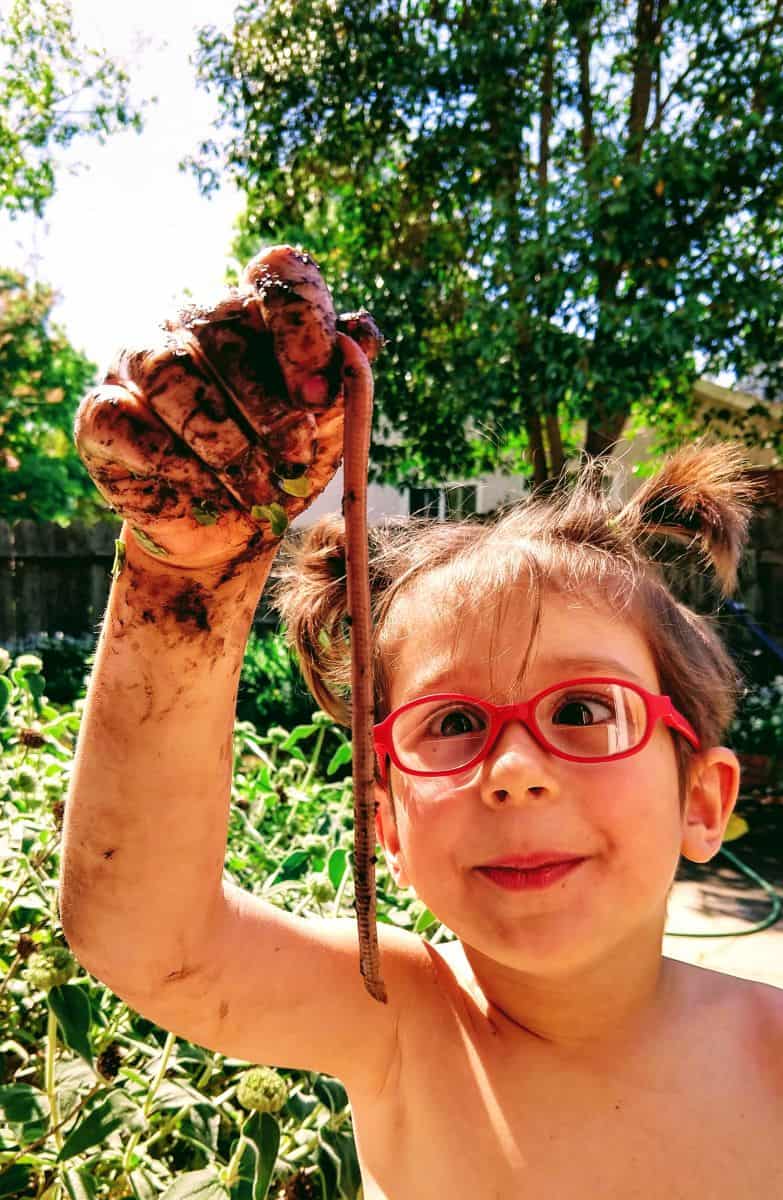
Worm science experiments for kids
If your kids are curious about worms, it can be even more fun to learn these facts with hands-on activities. Here are two simple worm science experiments you can do with your children.
Moist or dry?
This is a simple activity that requires a moist area and a dry area and at least one worm. You can use paper towels or dirt to create the experiment. Create one wet side and one dry side and then place your worm’s body half on the wet side and half on the dry side. Observe which way your worm travels. Does the worm prefer the moist side or the dry side?
Light or dark?
This easy experiment is very similar to the first, but this time you are testing to see if the worm prefers the light or the dark. To set up this experiment you need to create an environment with a dark side and a light side. This is explained really well on Education.com. Which way do the worms travel? Why do you think they went that way? Did they prefer light or darkness?
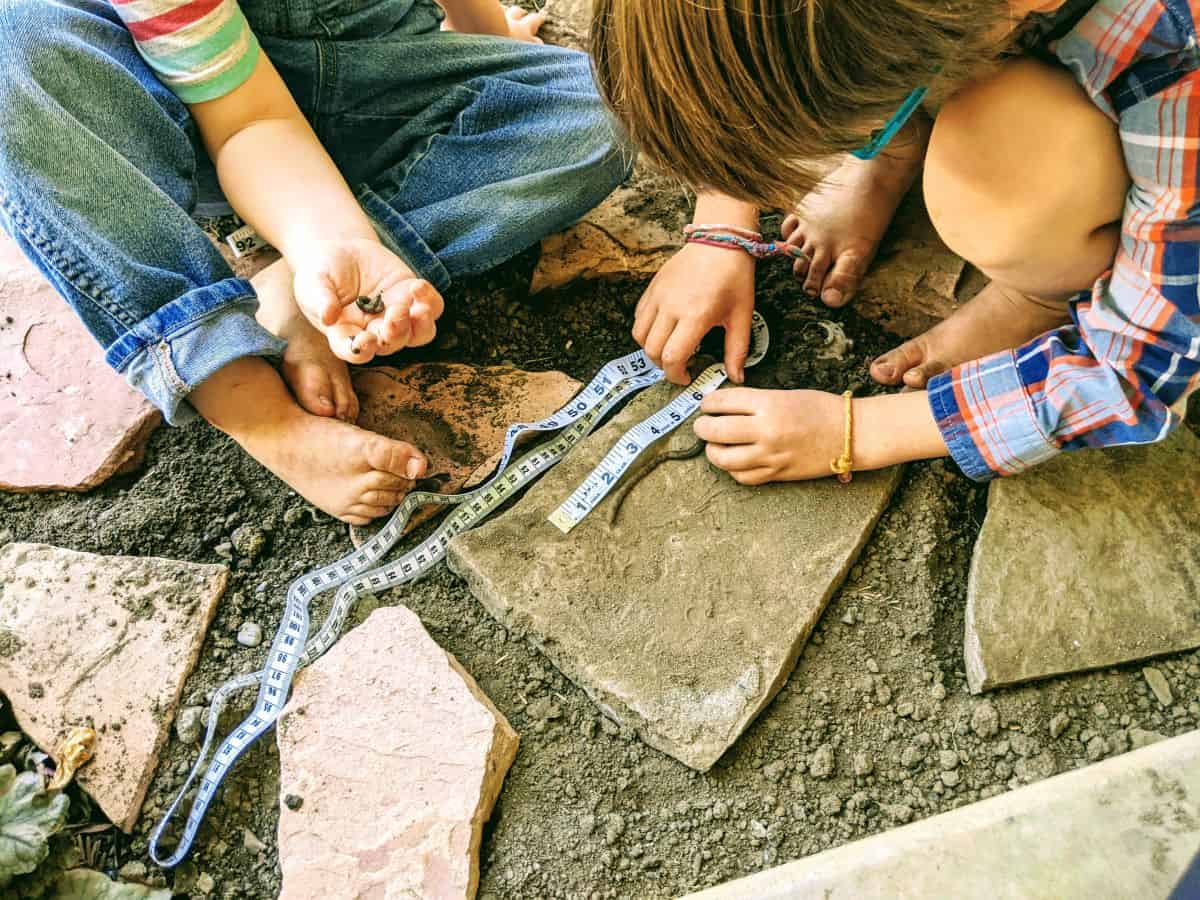
Worm activities for kids
If you want to extend your worm adventures and add some more learning into the mix, here are some simple and fun worm activities for kids.
Measuring the worms
When you go out on a worm hunt, bring a ruler along with you. Children love measuring things, even if they don’t understand the concept yet. And for the older kids, have them measure each worm, write down the measurement, and then compare the findings. With this simple activity, you’ve added math to your learning.
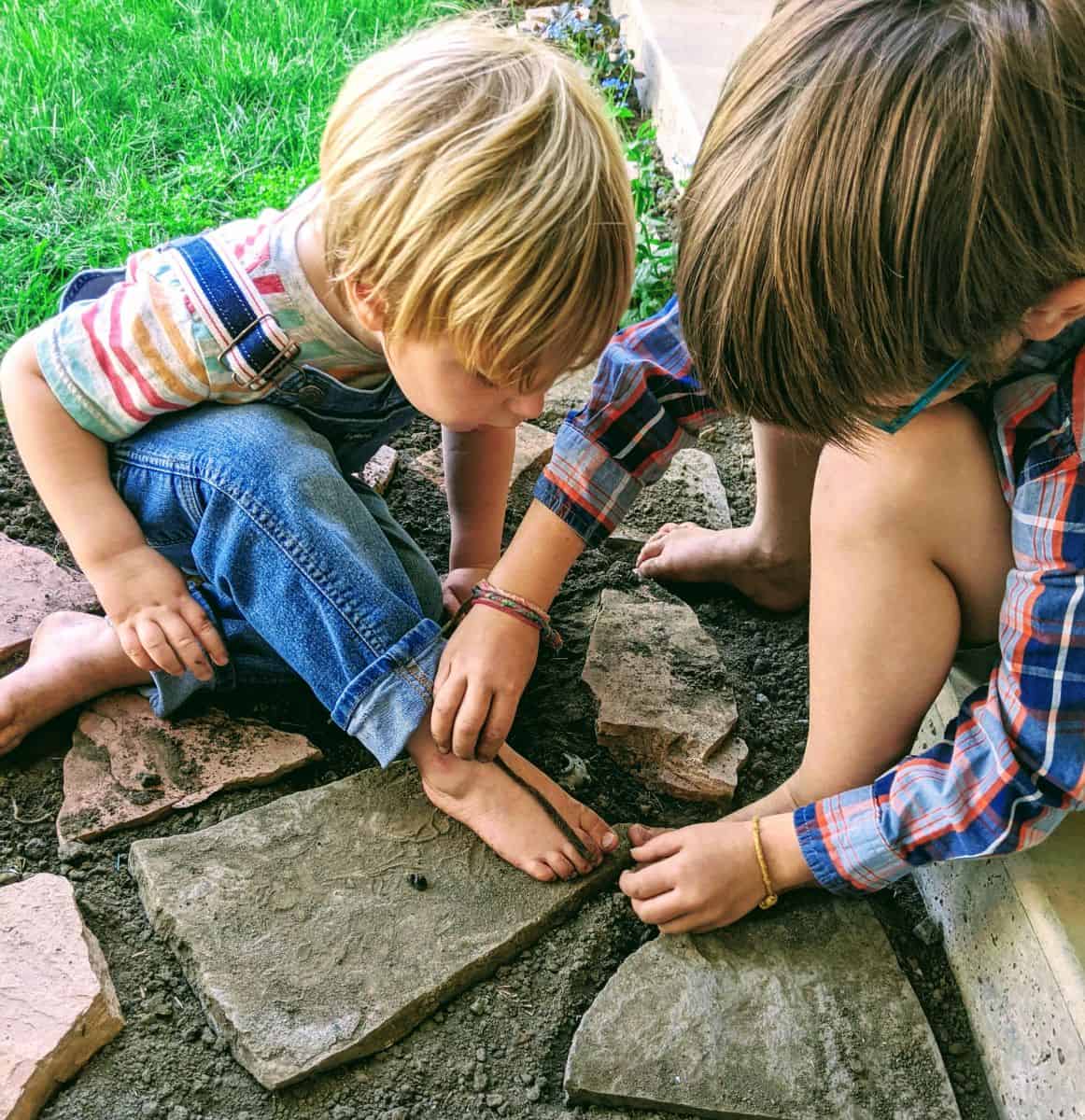
Creating a wormery
If you want to take exploring worms to the next level, consider creating a worm bin. This is a fairly simple project and your children are sure to delight in checking in on the worms and seeing how fast they eat through your food scraps. Here are some wonderful, kid-friendly tutorials for how to create a wormery with kids and creating worm farm.
Worm arts and crafts for kids
Kids love art and there is always something special about creating art projects that align with what you’ve been exploring in nature. If you want to add a little art and crafts into your worm exploring, look no further! Here are some fun worm-inspired arts and crafts for your kids to do and enjoy!
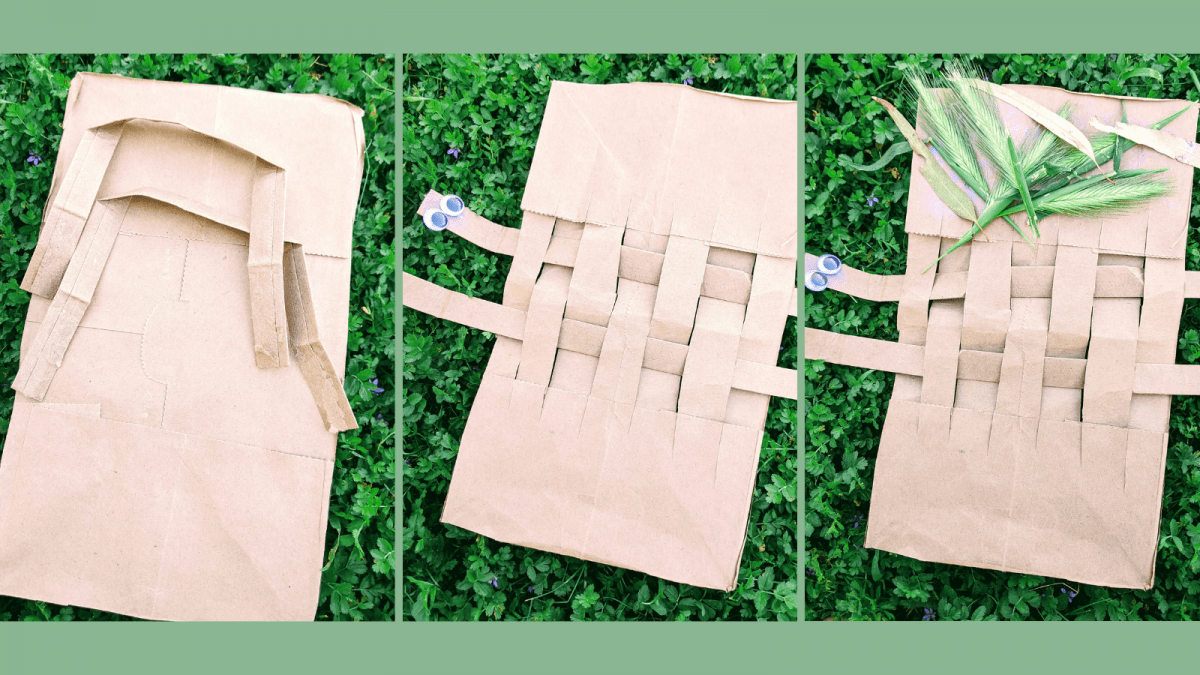
Upcycled paper bag worm weaving
If your house is anything like mine you often find yourself with an excess of brown paper bags. Turn these paper bags into a fun worm activity in only a couple of steps.
- Cut your paper bag. Remove the handles (these will be the worms) and cut the bottom of the bag out (this will be the worm weavery). Save the remaining large paper bag portion for a painting canvas or wrapping paper.
- Fold the paper bag bottom in half and cut from the folded side 4-5 lines, leaving 3-4 inches uncut at the top and bottom. Voila, this is the dirt the worms will weave in.
- Decorate your worms with markers, googly eyes, or anything else that your children want to use.
- Add nature finds to the top of your worm weavery. This is totally optional, but it does make it seem more obvious the worms are underground.
- Now you can grab your worms and weave them in and out of the weavery. This can be done once and displayed like art or over and over again to help improve fine motor control.
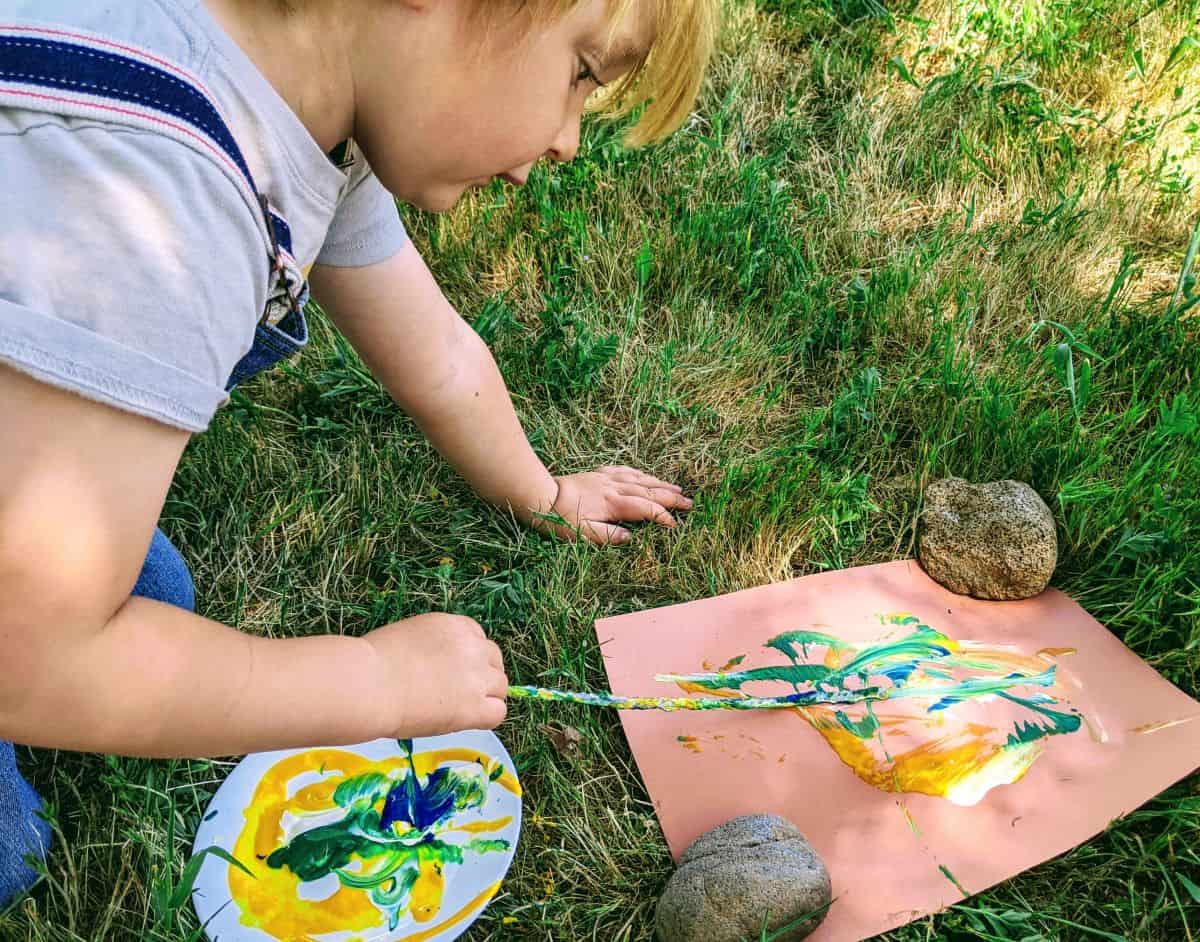
Painting with yarn worms
Painting with yarn worms is a simple project that requires only paint, yarn (or string, twine, spaghetti noodles, or anything else you can think of that is wiggly and worm-like), and paper.
After you’ve gathered supplies, simply dip the yarn into the paint and then let your children find their own way to use the yarn as a paintbrush. Children will come up with their own way of using their string-worms to paint and the resulting art will likely reflect the way they chose to paint.
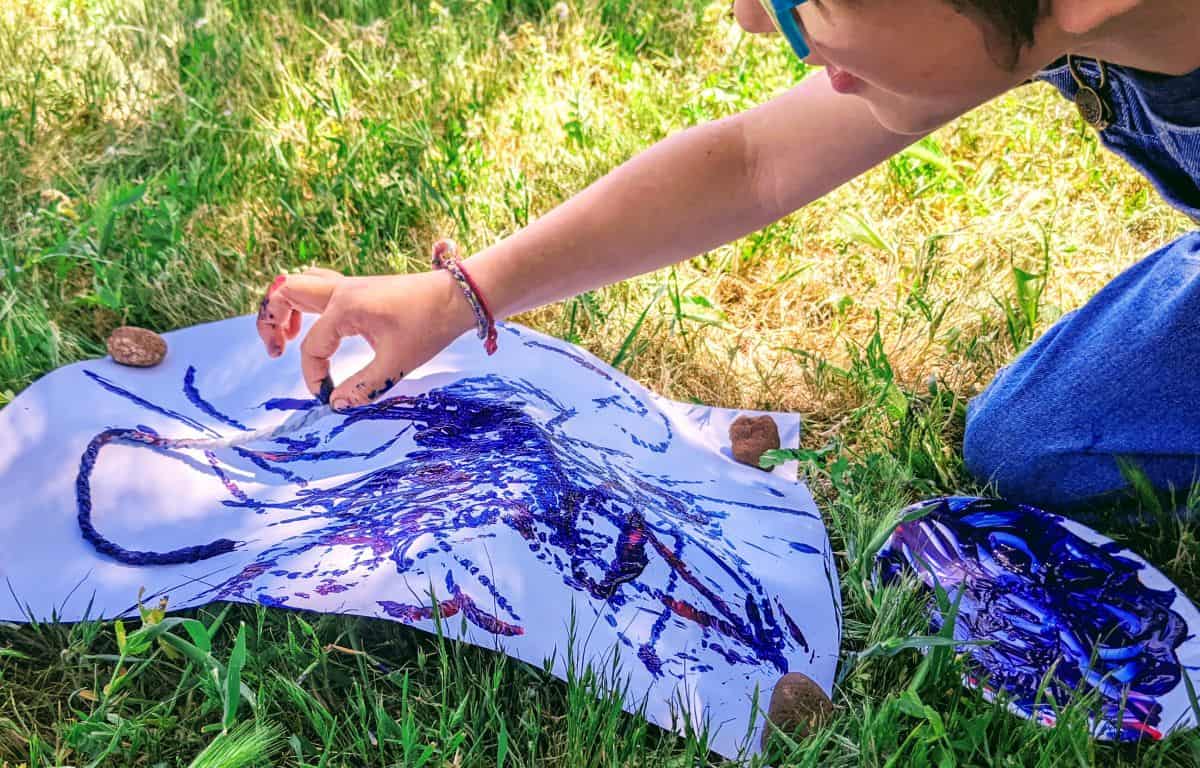
Worm coloring pages
Sometimes having a coloring page to work on during family read-aloud time or whenever the mood strikes, is a simple and fun way to bring your nature learning into other aspects of your children’s lives. Here are two great options available for free.
- Earthworm coloring pages for the whole family
- Worm bubble letter coloring pages

Worm jokes for kids
Add a little laughter into your worm exploration by cracking one or all of these worm-tastic jokes. In fact, there is bound to be at least one that makes your children laugh out loud or at least sigh heavily as they bask in the worm humor.
Q: What is invisible and smells like a worm?
A: A bird fart!
Q: What reads and lives in an apple?
A: A bookworm!
Q: What does a worm do in a cornfield?
A: It goes in one ear and out the other!
Q: What do you call a worm with no teeth?
A: A gummy worm!
Q: What do worms use to leave messages?
A: Compost-it notes!
Q: What is life like for a wood worm?
A: Boring!
Q: What do you get if you cross a worm and an elephant?
A: Very big holes in your peanut garden.
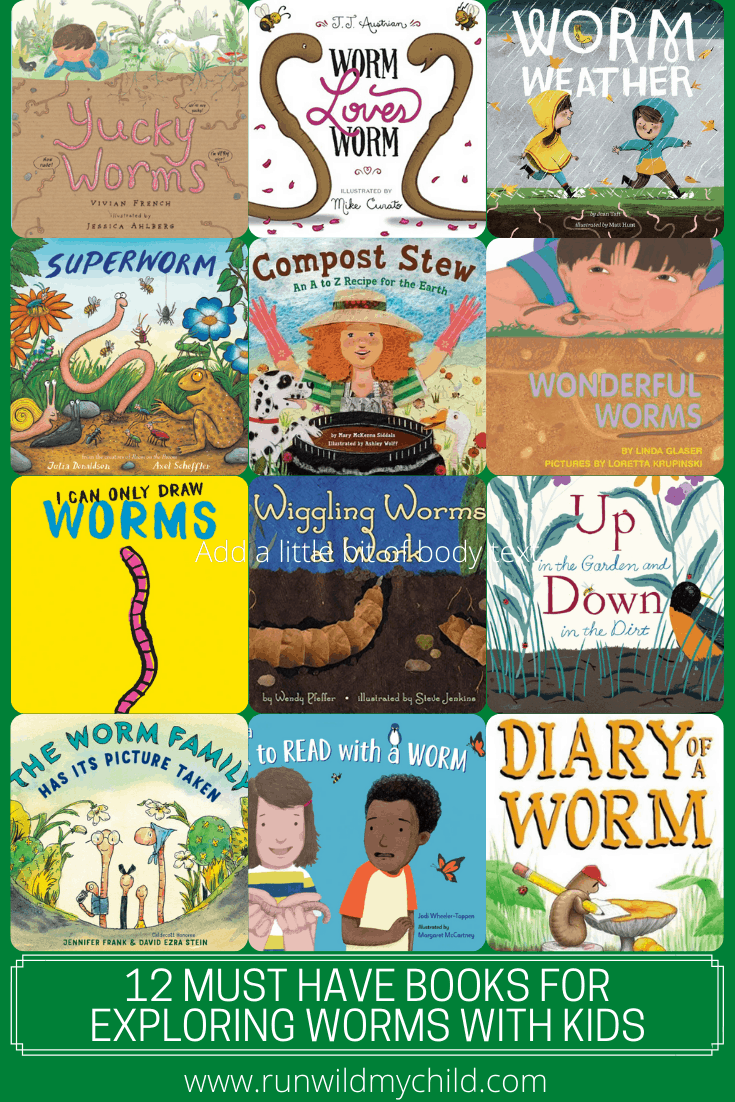
Worm books for kids
Bring your worm nature study into other areas of your family life with one or more good worm-themed books. Not only are many of the following books full of worm facts, but many are funny too. Grab a book or two and head on outside to read to your children and the worms too.
- Compost Stew by Mary McKenna Siddals
- Diary of a Worm by Doreen Cronin
- I Can Only Draw Worms by Will Mabbitt
- Superworm by Julia Donaldson
- Up in the Garden, Down in the Dirt
- The Worm Family Has its Picture Taken by Jennifer Frank
- This is a Book to Read with a Worm by Jodi Wheeler-Toppen
- Wonderful Worms by Linda Glaser
- Worm Loves Worm by J.J. Austrian
- Worm Weather by Jean Taft
- Yucky Worms by Vivian French
Learning about worms with kids
Exploring worms with kids is such a treat. Not only is it an easy activity that requires little to no preparation, but worms are everywhere. Under any given acre of land, there can be 250,000 to 1.5 million earthworms helping to create and maintain Earth’s soil. They are an incredibly important critter and one that is almost always easy to find. In other words, exploring worms with kids is kind of impossible to avoid, so you might as well make it fun! We hope these worm facts, worm jokes, worm activities and worm books will help!
What is your favorite way of learning about worms with kids?

About the author
Katie lives in a tiny home on wheels and travels full-time with her two mostly wild children, tech-minded partner, two well-traveled pups, and adopted pet snails. As they wander the North American continent, Katie explores as much as possible, with a particular fondness for the adventures her family enjoys in state and national parks. When not trekking through the outdoors, Katie enjoys baking, homeschooling, consuming mochas from local coffee shops across the continent, practicing her photography skills, and soaking up as much knowledge as she can.
As an advocate for families exploring the great outdoors, Katie co-founded a Hike it Baby branch in her hometown in Northern California and tries to encourage families to get outside whenever possible. Katie has a Master’s degree in human development from the University of Missouri, Columbia, but her passion is really history and humanities (which is coincidentally what her Bachelor’s degrees are in). She currently volunteers on the Hike it Baby National team as a contributing blogger.
You can find more from Katie online in the following locations:
Instagram: @familyinwanderland
Website: www.familyinwanderland.com
Facebook: @familyinwanderland
RWMC posts: Katie Fox







